From ‘Patton’ to ‘1917’: The 20 Best War Movies of the Last Half-Century
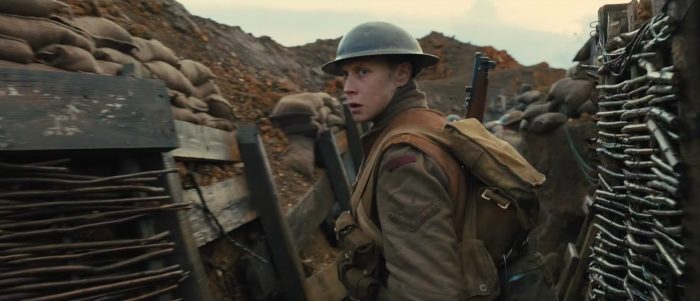
War is hell but it sometimes provides the backdrop for great movies. The recent Blu-ray release of 1917, followed by the 50th anniversary, this week, of the Oscar-winning Patton, starring George C. Scott, is as good an excuse as any for cinephiles to hunker down in the trenches of an impromptu war movie marathon (especially if you’re stuck at home right now due to the ongoing coronavirus pandemic).
With that in mind, here’s a mission for you, soldier: work your way through this chronological list of the best war movies of the last fifty years. “Best” is ultra-subjective, of course, but when you’re Alamo-ed up in a fort of pillows in your living room and there’s nothing good on television, few of these movies should disappoint.
What defines a war movie? There are many quality films, set during times of war, where the drama plays out tangentially to the main battlefield conflict. The anime film Grave of the Fireflies, for instance, shows the devastating impact of World War II on the lives of Japanese civilians, specifically, two children. This list is focused less on war-adjacent historical dramas (Westerns like Dances with Wolves, or even Holocaust dramas like Schindler’s List being included in that definition) and is more focused on films where the action occurs on the frontlines of the military conflict.
Steven Spielberg once said, “Every war movie, good or bad, is an antiwar movie.” Others have argued that the opposite is true and every war movie is a pro-war movie. The movies on this list are about soldiers in battle, but they’re not necessarily pro-war—even if some of them do stray toward one-sidedness.
Having a protagonist and antagonist is virtually unavoidable in storytelling, even the postmodern, perspectival kind that doesn’t rely on fixed sympathies. However, there’s a fine line between being patriotic and propagandist. What we’re interested in here isn’t recruiting-tool movies that explicitly glorify a suspect cause, downplaying the humanity of the enemy in favor of rah-rah American exceptionalism. The bread-and-butter of this list, rather, is human-centered stories that play out in the so-called “theater of war.”
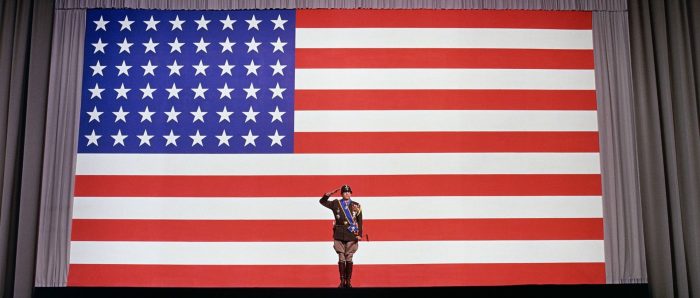
1. Patton (1970)
Patton is perhaps most well-known for its opening speech, where George C. Scott — in character as the eponymous World War II general — stands uniformed in front of a giant American flag. “Americans have never lost and will never lose a war,” he tells his offscreen troops. The self-assured jingoism of these words takes on a shade of irony when you consider that moviegoers first saw this scene while the U.S. was mired in a losing war in Vietnam.
In 1970, while that was going on overseas, 20th Century Fox was busy distributing classic war movies on the home front. January saw the release of Robert Altman’s MASH, which followed army doctors “snatching laughs and love between amputations and penicillin” during the Korean War. MASH earned an Oscar nomination for Best Picture, but it lost the award to Patton, while Scott famously refused his own Best Actor win. (On this list, we’re counting forward from early April 1970, when Patton landed in theaters, otherwise MASH would surely make the cut, too.)
Director Franklin J. Schaffner was hot off the success of Planet of the Apes when he helmed Patton. Screenwriter Edmund H. North also had a background in science fiction, having penned The Day The Earth Stood Still. He co-wrote the script with Francis Ford Coppola, who only managed to save his job on The Godfather because of this film’s success.
Patton is as much a character study as it is a war movie. Like other eccentric officers we’ll soon meet, the general is a poet-warrior; he believes in reincarnation. Looping trumpet sounds remind him of his past life, some two thousand years ago, as he steps out of his jeep and walks among the ruins of a city where the Romans and Carthaginians fought. Yet hubris impedes him in this life and in the end, he is left to ponder how “all glory is fleeting.”
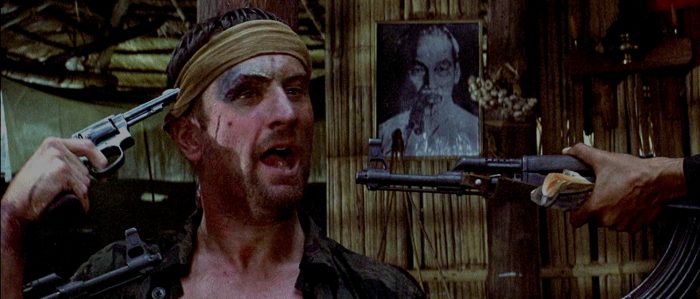
2. The Deer Hunter (1978)
“This is this.” After the Vietnam War ended in 1975, Hollywood began addressing the war in a more head-on fashion. 1978 was the year when films like Hal Ashby’s Coming Home and Michael Cimino’s The Deer Hunter started penetrating the mainstream market. Both films confronted the psychological effects of the war on American soldiers. At the 51st Academy Awards, they dominated the major categories, with The Deer Hunter taking home the awards for Best Picture, Best Director, and Best Supporting Actor for Christopher Walken.
There’s not much historical basis for the Viet Cong subjecting POWs to Russian roulette games. However, The Deer Hunter is less concerned with history and more concerned with the toll of traumatic stress on working-class types (in this case, steelworkers), who were thrust into life-or-death situations as they shipped overseas to fight for their country. Russian roulette and the gambling dens of Saigon, where old friends meet their fate in the worst way possible, are simply stand-ins for the randomness and brutal chaos of war.
The Deer Hunter continued the ’70s winning streak — begun with Mean Streets, The Godfather Part II, and Taxi Driver — that helped cement Robert De Niro’s reputation as the greatest actor of his generation. It was John Cazale’s final film before his death and it was the film that earned Meryl Streep the first of her many Oscar nominations. It also boosted the profile of John Savage, whose character undergoes a harrowing journey from his own wedding to a bamboo cage full of river rats to a VA hospital where he’s had both his legs amputated. After watching this movie, you’ll have a lump in your throat anytime you hear, “Can’t Take My Eyes Off You.”
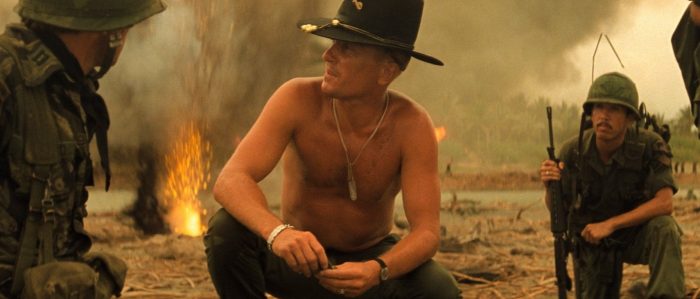
3. Apocalypse Now (1979)
Apocalypse Now is the culmination of a decade of New Hollywood cinema, when directors like Francis Ford Coppola, William Friedkin, and Peter Bogdanovich were at the height of their artistic reign, encountering each other at stoplights and trumpeting their critical and commercial success from the sunroof of stretch limos. The movie brats of the 1970s had their unofficial pack leader in Coppola, whose cinematic river odyssey — through Vietnam and into the wilds of Cambodia — bears a symbolic weight that extends beyond the war movie genre into Hollywood history and the heart of darkness itself.
In Apocalypse Now, the audience boards a patrol boat for a ride through the underworld, where it encounters Wagnerian helicopter attacks, surfers and sauciers, jungle tigers, dancing Playboy Playmates, sampan massacres, puppy dogs, pagan idolatry of mad colonels, T.S. Eliot quotes, and ritual water buffalo sacrifices. Purple haze and the smell of napalm engage the senses as the movie pushes its characters to the brink, much like Coppola did with himself and his cast.
The film’s many production problems have become the stuff of Hollywood legend. Coppola fell victim to a nervous breakdown, thrice threatening suicide. Lead actor Martin Sheen suffered a heart attack brought on by alcoholism. (Filming of the hotel room intro took place on Sheen’s 36th birthday while he was drunk). Supporting actor Dennis Hopper reportedly had cocaine funneling back to him through official channels to fuel his performance as an American photojournalist turned crazed Colonel Kurtz acolyte. Marlon Brando — Coppola’s old Godfather collaborator, who the director re-enlisted to play Kurtz — also had his own vices, which dictated how the film would be shot. He showed up on the set so overweight that he had to be dressed in black and filmed from the neck up or in shadow, using a body double.
They were fighting their own filmmaking war, the kind where real human cadavers could have shown up as props. It was sheer insanity but it resulted in one of the greatest movies of all time. Coppola and Hollywood would never be the same.
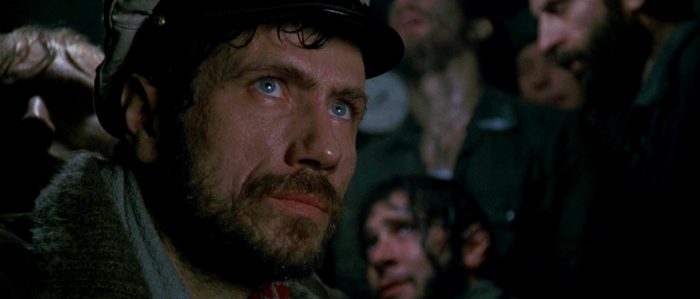
4. Das Boot (1981)
If The Hunt for Red October and Crimson Tide are the first titles that come to mind when you think “submarine movie,” then chances are, you haven’t yet experienced Das Boot. Wolfgang Petersen’s 3-hour epic takes us aboard a German U-boat during the Second World War, where the hardscrabble existence of sailors exists at a harsh remove from the benighted politics of the surface world. The film’s principal actors dubbed their own voices into English for the U.S. release. Jürgen Prochnow, known to horror fans as Sutter Cane in In the Mouth of Madness, stars as the U-boat’s jaded captain, who rails against his masters in Berlin and their empty radio propaganda and who needles the one Nazi on his sub for his gross underestimation of Winston Churchill.
At one point, the sub’s crew members — bearded and wet-haired, dressed like real seamen — enter the alien environment of a luxurious topside dinner aboard another ship, where clean-cut, uniformed officers greet them as “heroes” with the Sieg Heil salute. The contrast between these officers and the U-boat sailors is stark. The men of The Boat (the English translation of Das Boot) represent the grimy reality of those who fight the wars waged by politicians.
Depth charges rock The Boat and its hull creaks ominously, threatening to collapse, as it tests the limits of how deep it can dive. Das Boot ventures further off the map than most war movies, to a place in international waters where nationalities no longer matter. All that remains is a common humanity, tested by grueling conditions. Prochnow would later reunite with Petersen for Air Force One, playing the foreign dictator whose capture set in motion the film’s Die-Hard-esque plot.
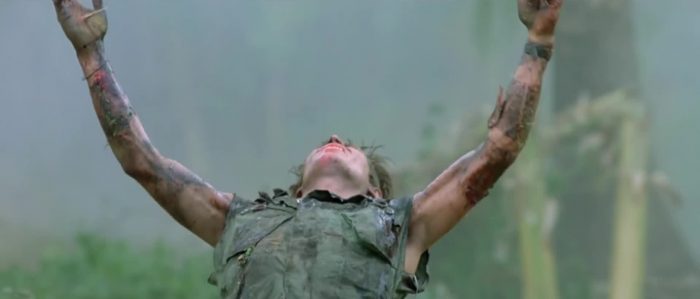
5. Platoon (1986)
Platoon came from a personal place in that writer-director Oliver Stone was a real Vietnam vet, someone who had served in the U.S. Army during the war. The tagline for the movie is, “The first casualty of war is innocence,” and that informs how Stone approaches his subject. A young Charlie Sheen (then, just filled with the blood of a tiger cub) stars as Chris Taylor, a wide-eyed infantryman who gets caught between the opposing forces of his two platoon sergeants, Elias and Barnes. Willem Dafoe plays Elias and Tom Berenger plays Barnes; the movie earned them dual Oscar nominations for Best Supporting Actor.
Elias lounges shirtless on a hammock in the Underworld, a hutch decorated with Christmas lights where men suck bong hits and dance to Motown music. Jefferson Airplane and Smokey Robinson fill the air and Elias channels a line from Janis Joplin: “Feeling good’s good enough.” Meanwhile, Barnes and his men perpetrate war crimes, shooting innocent villagers and taking part in gang rapes. Against this backdrop, Chris — who came to Vietnam as a volunteer, hoping to discover himself and not be “a fake human being” — undergoes a traumatic journey from innocence to experience.
Platoon was Stone’s answer to the pro-war John Wayne film The Green Berets. Its musical theme, Adagio for Strings, conjures up immediate images of a helicopter takeoff where a man comes running out of the jungle too late. Scenes like this worked their way into the collective imagination and remain an indelible part of film history. In 1989, Stone would return to the canvas of Vietnam with Born on the Fourth of July, which illuminated the plight of veterans coming home from the war.
Continue Reading The Best War Movies of the Past 50 Years >>
The post From ‘Patton’ to ‘1917’: The 20 Best War Movies of the Last Half-Century appeared first on /Film.
from /Film https://ift.tt/3aVKDSn
No comments: